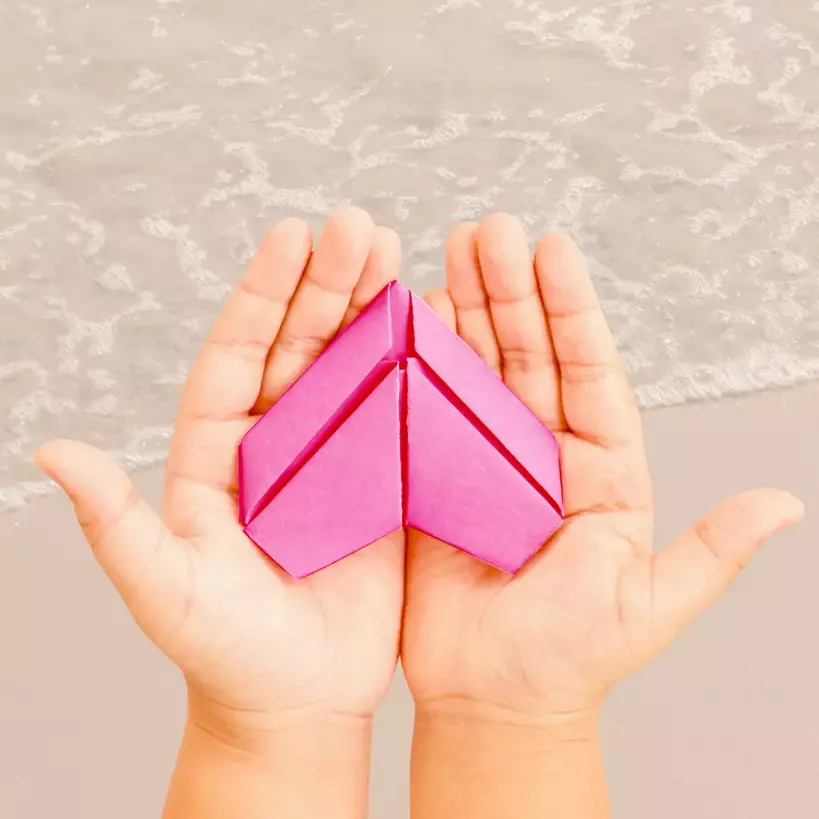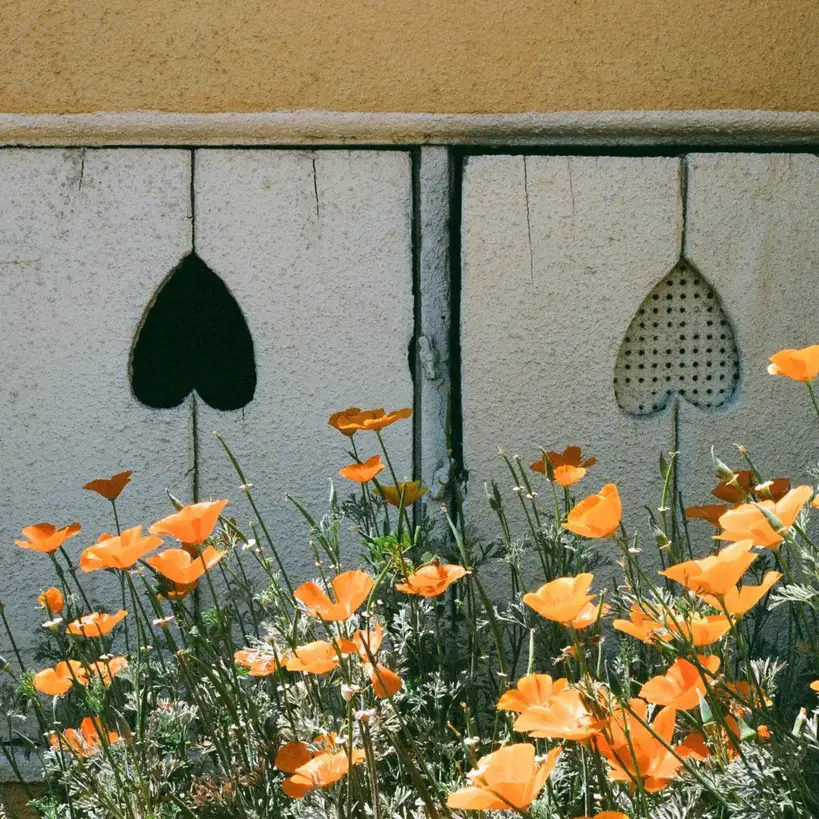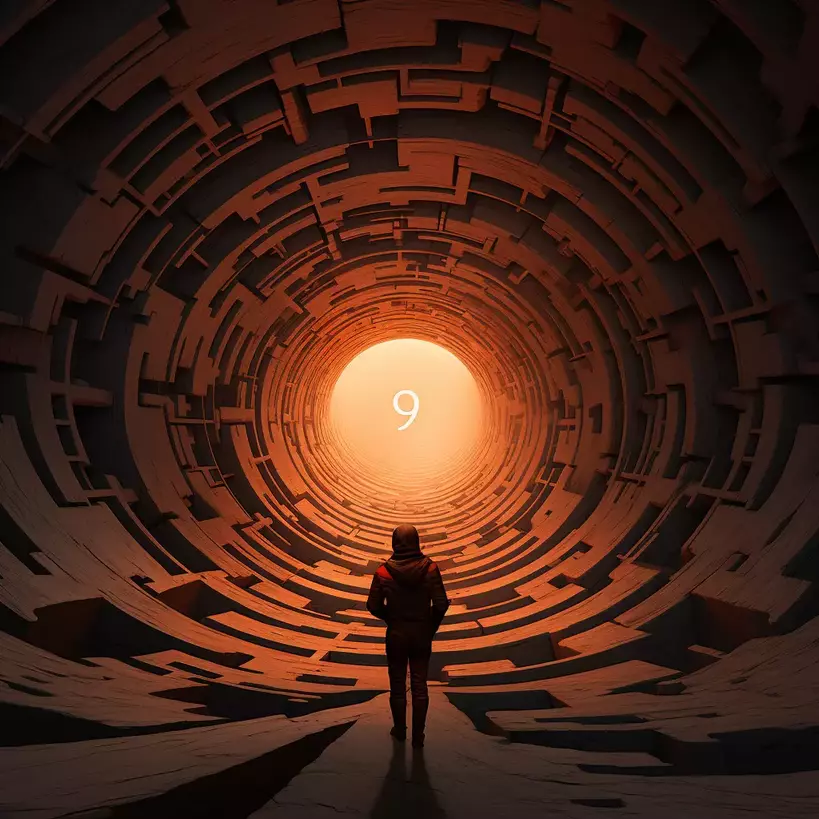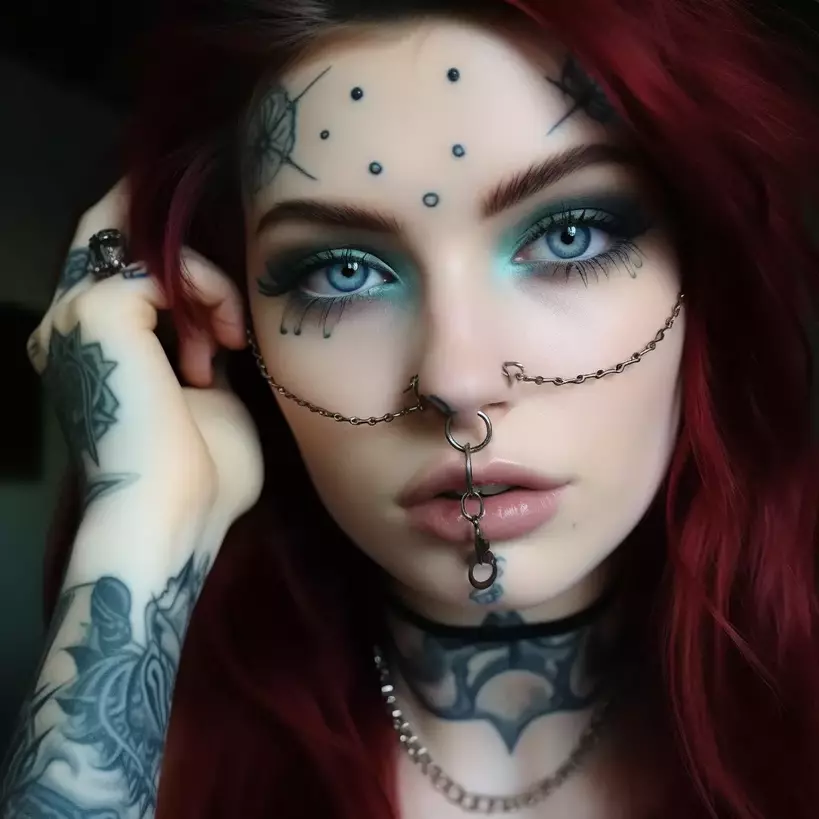The heart is an emblem that has captured the human imagination for millennia. Universally recognized as a symbol of love, passion, and affection, it is one of the most prevalent and powerful symbols in human history. However, when we see this familiar symbol turned on its head, what exactly does an upside-down heart signify?
This intriguing symbol, which has found its way into art, literature, jewelry, and digital media. We’re here to delve into the depths of this emblematic twist and decode the significance of an upside down heart. Let’s embark on this enlightening journey.
Contents
I. The Upside Down Heart: More Than Just a Symbol
An upside-down heart is simply a heart symbol or shape that is inverted, with its pointed end facing upwards and its curves facing downwards. While the conventional heart shape is universally recognized as a symbol of love, affection, and compassion, flipping it can bring a range of interpretations, both in terms of aesthetics and symbolism.
1. Reflection and Reevaluation
Symbols often carry with them powerful energies that guide our introspective journeys. When the heart, a universally recognized emblem of love, is turned upside down, it calls for a pause. This inversion prompts a reevaluation of what love means on a personal and cosmic scale.
It’s not just about the euphoria and pain love brings but also the spiritual lessons encapsulated within these emotions. The upside-down heart reminds us that for every feeling, there is depth waiting to be discovered, a depth that often requires reflection and self-awareness.
2. Vulnerability and Openness
In many cultures and spiritual traditions, the act of opening oneself up, of becoming a vessel, is a step towards enlightenment. The upside-down heart, with its welcoming curve facing the heavens, embodies this state of receptiveness.
It emphasizes that genuine growth, in love and spirituality, often comes from being vulnerable. By laying open one’s heart and soul, we allow divine wisdom, blessings, and even challenges to pour in, facilitating a deeper connection with the universe and our own inner self.
3. Challenging Conventional Understandings
Conventions provide a framework, but love, in its infinite forms, often spills out of these boundaries. The upside-down heart serves as a symbol of non-conformity. It challenges the age-old narratives and urges individuals to define love on their own terms.
In the spiritual realm, this inversion is a nudge, prompting us to question, seek, and discover love’s essence beyond societal norms.
4. Grounded Love
The ethereal nature of love often takes us to emotional heights, making us feel like we’re floating amidst the stars. However, the upside-down heart is a gentle reminder of the importance of grounding this love.
It emphasizes that while love can be dreamy and transcendent, it should also be rooted in reality, trust, and mutual respect. Such love stands the test of time, weaving together the spiritual and the earthly.

5. The Need for Healing
Every heart, at some point, endures pain. The upside-down heart is a testament to those moments when love feels heavy, almost turning our world upside down. But more importantly, it symbolizes hope.
It’s a reminder that even when love hurts, the heart has an innate capacity to heal, to renew itself. With time, compassion, self-love, and often spiritual guidance, what was once broken can be mended.
6. Transformation and Reversal
Life is dynamic, and so is love. The upside-down heart captures the essence of this dynamism. By inverting a globally recognized symbol of love, it hints at the transformative power of emotions. Love is not stagnant; it evolves, matures, and often takes forms we never anticipated.
The inverted heart is a beacon of this journey, moving from passionate whirlwinds to the calmness of unconditional love. It’s a celebration of love’s multifaceted nature, urging us to embrace every twist and turn.
II. What Does the Upside Down Heart Emoji Signify?
Emojis have woven themselves into the fabric of digital communication, providing users with a unique and visually appealing way to convey emotions, reactions, and intentions. Among the sea of emojis available, the heart stands out as a universal symbol of love, affection, and positivity.
But what happens when this quintessential emblem is turned on its head? Enter the upside-down heart emoji, a symbol that, although not universally recognized, brings with it a world of nuanced meanings.
1. A Playful Variation
The upside-down heart can often be seen as a quirky and whimsical variation of the traditional heart emoji. Emojis, by their nature, are meant to be fun and engaging, and using an upside-down heart can infuse a conversation with a sense of playfulness.
It provides a fresh and unexpected twist, making a message stand out. For instance, sending a birthday wish or congratulating someone with an upside-down heart might be a way to add a unique and personal touch to the message.
2. Subtlety in Sentiment
The nuanced and delicate nature of emotions means they aren’t always easy to define. The upside-down heart can perfectly encapsulate this subtlety. For someone who’s feeling a mix of emotions – perhaps they’re in the early stages of a relationship or are grappling with their feelings – the upside-down heart might be the ideal emoji to represent that sense of uncertainty.
It speaks to those grey areas in our emotional landscape, where feelings are present but not yet fully formed or understood. It might represent a budding romance, a friendship turning into something more, or just a complex cocktail of feelings that one can’t quite put a finger on.
3. Contrarian or Ironic Use
Modern communication, especially among younger generations, is rife with irony and sarcasm. Emojis are no exception to this. The upside-down heart can be a tool for those looking to convey emotions with a hint of irony. For instance, in response to an obvious brag or a humorous boast, sending an upside-down heart might be a way to playfully acknowledge the statement while also poking fun at it.
It allows users to play with the boundaries of communication, offering a faux or exaggerated sentiment that the recipient is likely in on. This ironic use is a testament to the evolving nature of digital communication and how emojis are continuously redefined by their users.
Conclusion
Emojis are more than just digital icons; they’re a reflection of our evolving language, culture, and emotions. The upside-down heart, while not as mainstream as its right-side-up counterpart, offers a plethora of interpretations, each as valid and meaningful as the other.
Whether you use it for playful banter, to convey complex emotions, or just for a touch of irony, it’s a symbol that enriches our digital vocabulary, making conversations more colorful, nuanced, and deeply human.
III. Tattoo Artistry and the Upside Down Heart
A tattoo, more than just ink on skin, is a canvas of personal expression and stories. It encapsulates moments, beliefs, and emotions that hold significance for the bearer. Among the myriad of symbols and designs one can choose, the upside down heart has emerged as a poignant and meaningful emblem in tattoo culture. Let’s delve deeper into its popularity and interpretations:
1) Symbol of Heartbreak
The heart, in its traditional orientation, has always symbolized love and affection. When turned upside down, it can evoke the antithesis:
- Emotional Resonance: Many who’ve faced heartbreak, betrayal, or the loss of a loved one might resonate with the inverted heart. It visually represents a love that’s experienced turbulence or distress.
- Testament of Strength: For some, this tattoo isn’t just about the pain but also the recovery. It’s a testament to their resilience, a reminder that they’ve weathered the storm and emerged stronger.
- Closure: Tattoos can often provide closure. Inking an upside down heart can be therapeutic, signifying the acceptance of past pains and the willingness to move forward.
2) Rebellious Love
The upside-down heart can also be a badge of honor for those who pride themselves on breaking the mold:
- Defying Norms: For individuals in unconventional relationships, or those who identify with non-traditional forms of love and attraction, this symbol can be a bold statement of defiance against societal norms.
- Pride and Acceptance: Particularly within the LGBTQ+ community, the upside-down heart might signify pride, acceptance, and the celebration of love in all its diverse forms.
- Celebrating Individuality: For those who believe love isn’t one-size-fits-all, the upside-down heart becomes a celebration of individuality and personal definitions of love.

3) Aesthetic Choice
Beyond the depth of meaning, tattoos are also about aesthetic appeal:
- Artistic Expression: The unique orientation of the upside down heart provides an artistic flair, making it a popular choice for those seeking visually distinct tattoos.
- Versatility: Its simple yet striking design allows it to be incorporated into larger tattoo pieces, blended with other symbols, or stand out on its own.
- Trend Influence: As with any art form, tattoos are influenced by trends. The popularity of the upside down heart in pop culture can make it a sought-after design.
In conclusion, tattoos are stories etched in the skin, and the upside down heart, with its multi-faceted meanings and visual appeal, offers a rich narrative, making it a cherished choice for many in their tattoo journey.
IV. Upside Down Hearts In Jewelry Design
Jewelry has always been a powerful medium of self-expression, and designers constantly push the boundaries to create pieces that are not only beautiful but also carry deep meaning. The incorporation of the upside-down heart in jewelry design is an intriguing blend of aesthetics and symbolism. Let’s explore this trend and its significance:
1. A Modern Twist on Classic Symbolism
Jewelry often carries timeless symbols, like the heart, that have been recognized across cultures and eras for their significance. By turning the heart upside down, designers introduce a contemporary and avant-garde twist on a classic, making the piece stand out and resonate with those seeking non-traditional designs.
2. Diverse Range of Designs
Upside-down hearts can be featured in various jewelry items:
- Necklaces and Pendants: An inverted heart pendant can be a statement piece, often paired with other elements like gemstones or inscriptions.
- Earrings: Drop or stud earrings with upside-down heart motifs can be both playful and elegant.
- Rings: An upside-down heart set as the centerpiece of a ring can be both unique and meaningful.
- Bracelets and Charms: Charms in the shape of upside-down hearts can add a touch of whimsy to bracelets.
3. Symbolism and Personal Meaning
For many, jewelry is deeply personal. An upside-down heart might symbolize:
- A love that’s unique or unconventional.
- A journey of self-discovery or personal growth.
- The complexities and challenges faced in relationships.
- An independent spirit that does not conform to societal norms.
4. Materials and Craftsmanship
The beauty of the upside-down heart design is its adaptability to different materials:
- Gold and Silver: These classic metals can be molded to create delicate and sophisticated pieces featuring the upside-down heart.
- Gemstones: Diamonds or colored stones can be set within the heart’s design, adding vibrancy and luxury.
- Alternative Materials: Designers might use wood, leather, or even ceramics for a more rustic or bohemian feel.
5. Celebrity Influence and Trends
Celebrities often influence jewelry trends. If a well-known personality sports an upside-down heart jewelry piece, it can quickly become a sought-after design. Their reasons for wearing such pieces, whether for fashion or personal meaning, can drive its popularity in the mainstream.
6. Gift with a Message
Upside-down heart jewelry can be a thoughtful gift, especially when the giver wants to convey a message that’s deeper than the conventional sentiments attached to a regular heart. It could be a celebration of a unique bond, a reminder of challenges overcome together, or simply an appreciation of someone’s individuality.
Conclusion
Upside-down hearts in jewelry design encapsulate the ever-evolving language of adornment. As jewelry is not just about aesthetics but also about sentiment, the inverted heart becomes a powerful emblem of modern emotions, relationships, and individuality. Whether worn as a personal symbol or given as a gift, it’s a design that prompts reflection and celebrates the intricate tapestry of human emotions.
V. Upside Down Hearts vs Traditional Heart Symbols
The heart, as a symbol, has universal resonance. Universally recognized and celebrated, it’s emblematic of love, emotion, and the very essence of life. The traditional heart shape is so deeply ingrained in our culture that deviations, such as upside down hearts, pique interest.
Let’s delve into a comprehensive comparison of the two, unraveling their meanings, applications, and cultural nuances.
A. Historical Roots
Traditional Heart Symbols:
- Historically, the heart shape, as we recognize it today, gained prominence in the medieval and Renaissance periods. It’s frequently linked to representations of the human heart in art and manuscripts.
- Over time, it has become synonymous with sentiments of love, passion, and affection.
Upside Down Hearts:
- The upside down orientation is a more contemporary and less historical take on the heart shape. Its origins are not as deeply rooted in history, making it a fresher, more novel representation.
B. Symbolic Connotations
Traditional Heart Symbols:
- Direct Affection: Represents straightforward sentiments of love, passion, and care.
- Life and Vitality: As an emblem of the human heart, it also signifies life and vitality.
Upside Down Hearts:
- Receptive Love: Can signify a willingness or openness to receiving love or blessings.
- Transformed Sentiments: Might represent altered or transformed feelings, suggesting change, growth, or evolution in one’s emotional state.
C. Usage and Popularity
Traditional Heart Symbols:
- Widely recognized and used globally. From Valentine’s Day cards to jewelry, the heart is omnipresent.
- Embraced by diverse cultures and has found a place in religious iconography, popular culture, and art.
Upside Down Hearts:
- Gaining traction, especially in contemporary art, tattoos, and certain niche cultural expressions.
- Seen as a counter-culture or alternative symbol, offering a twist on the universally recognized heart shape.
D. Cultural and Contextual Variability
Traditional Heart Symbols:
- Holds a more or less consistent meaning across different cultures, symbolizing love and affection.
Upside Down Hearts:
- Its meaning can be more fluid, varying significantly based on the cultural or individual context.
- In some settings, it might be purely aesthetic, while in others, it could have deeper, more profound meanings.
E. Versatility in Expression
Traditional Heart Symbols:
- Given its widespread recognition, it’s a universally understood emblem, allowing for instant communication of affectionate sentiments.
Upside Down Hearts:
- Offers a degree of mystery and ambiguity. This makes it versatile, as it can be tailored to specific contexts, narratives, or personal stories.
Conclusion: While the traditional heart symbol stands as a time-honored emblem of love and life, the upside down heart offers a fresh perspective, challenging conventions and inviting deeper interpretations. Both are poignant in their right, one echoing shared human sentiments and the other urging introspection and nuanced understanding.
Final Thought
In conclusion, the upside-down heart carries a powerful and multi-faceted meaning. It symbolizes vulnerability, resilience, and the capacity to love deeply even in the face of adversity. It serves as a reminder that our hearts are not immune to pain and sorrow, but can also find strength and healing through love and connection.
Whether it is worn as a tattoo or used in artwork, the upside-down heart invites us to embrace our emotions and embrace the imperfect beauty within ourselves and others.


